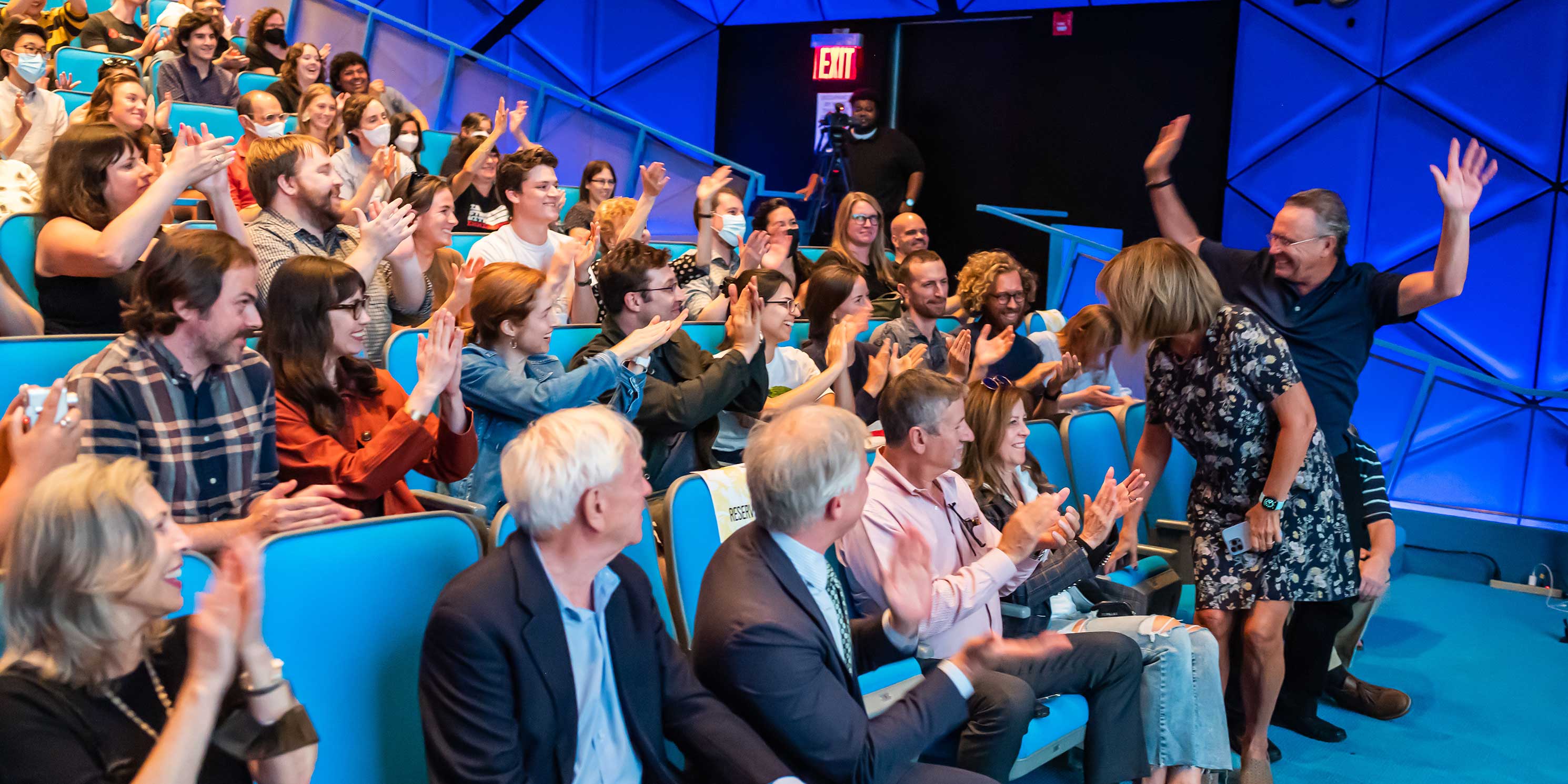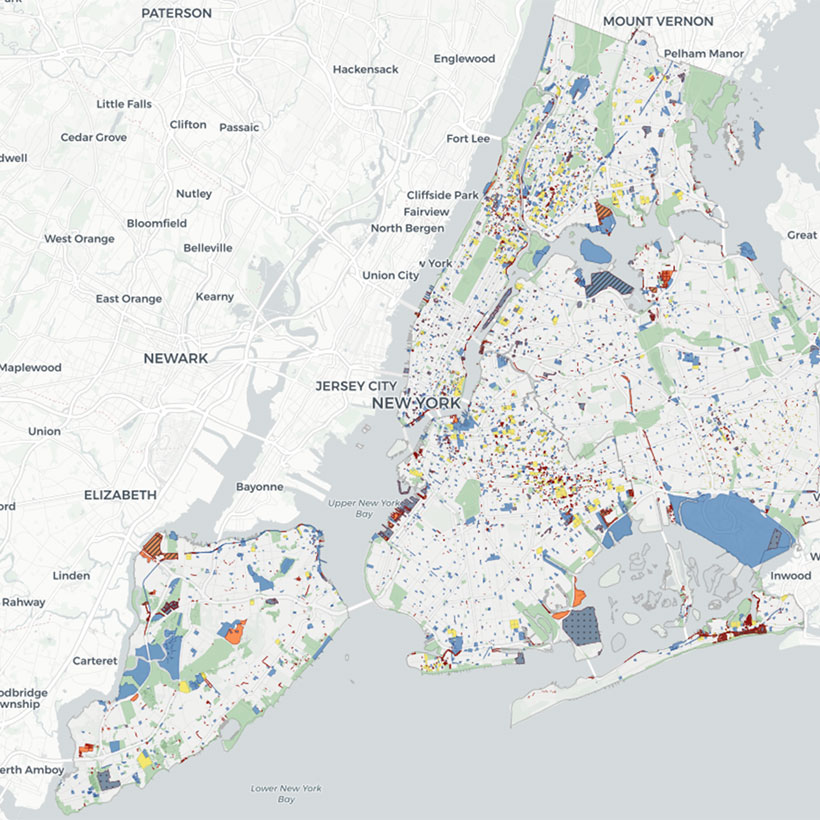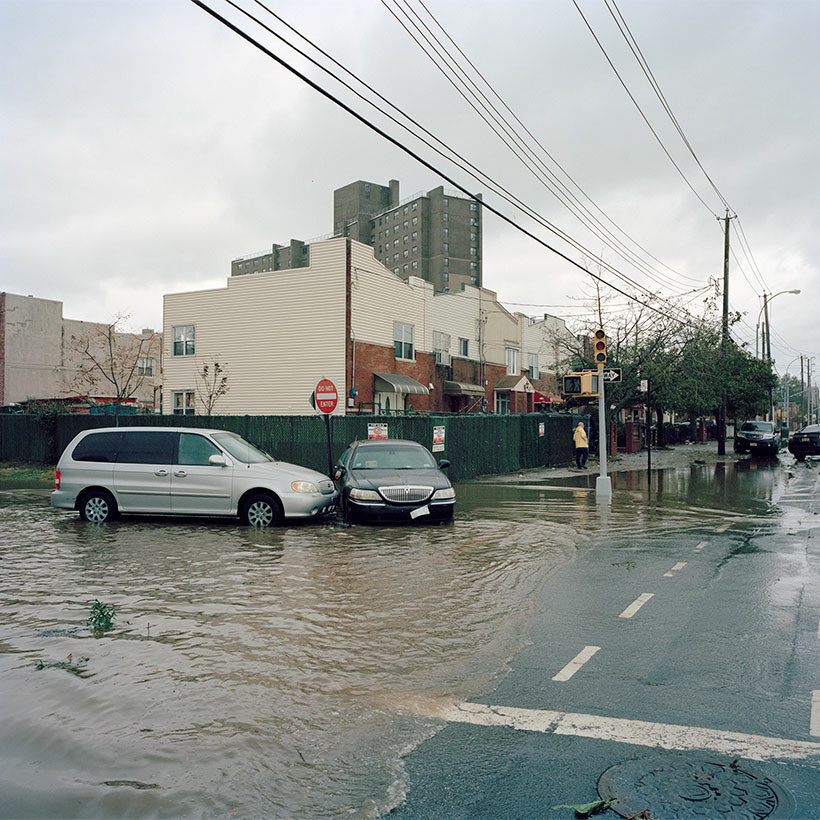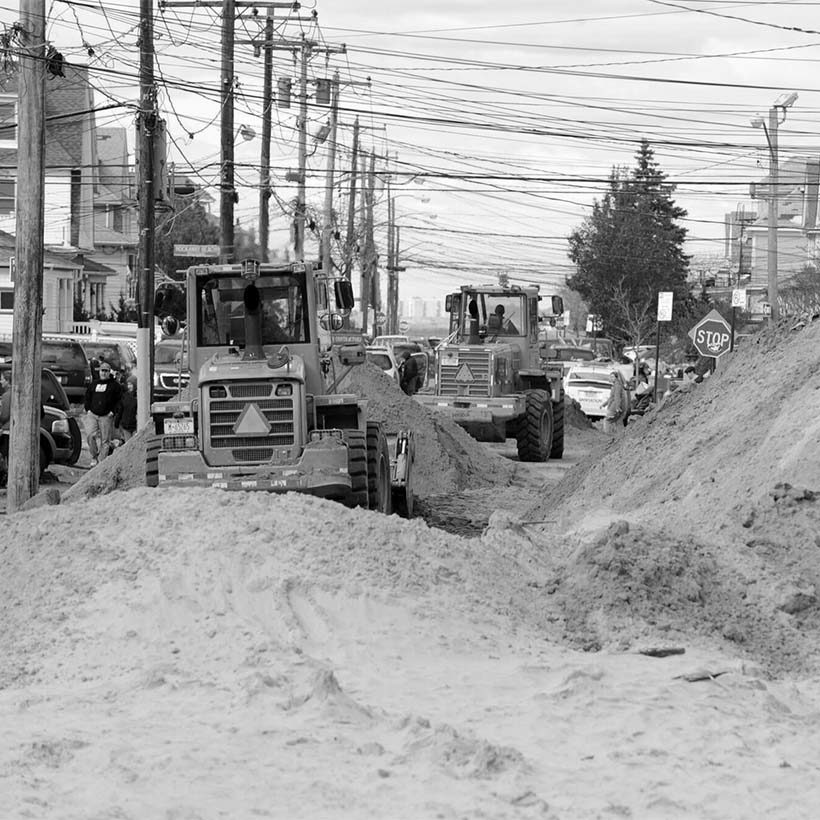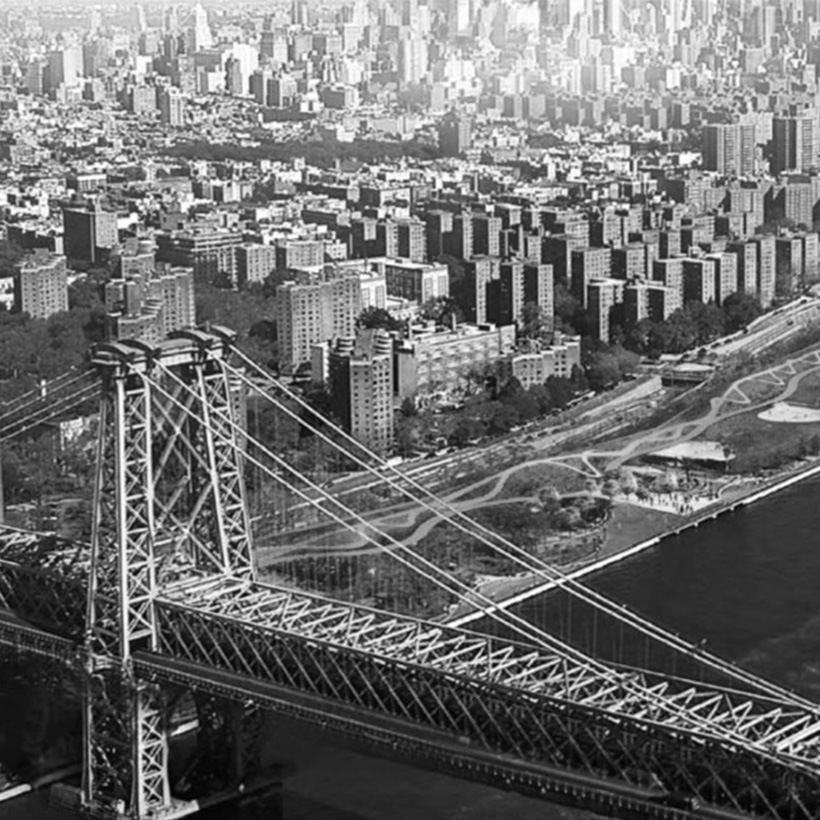Harbor Plan Does Not Adequately Address Coastal Flooding
Comments on the NY & NJ Harbor & Tributaries Focus Area Feasibility Study (NYNJHATS)
Mr. Bryce W. Wisemiller, Project Manager
U.S. Army Corps of Engineers New York District
Jacob K. Javits Federal Building, Room 17-401
c/o PSC Mail Center
26 Federal Plaza
New York, New York 10278
Dear Mr. Wisemiller,
The Municipal Art Society of New York (MAS) has been engaged in the public review process for the U.S. Army Corps of Engineers’ (USACE) NY & NJ Harbor & Tributaries Focus Area Feasibility Study (NYNJHATS) since the study’s inception. We appreciate the significant effort that has gone into the study and the planning behind the Tentatively Selected Plan, Alternative 3B. We also welcome the infusion of federal funding to protect New York City and New Jersey from coastal storm impacts.
As one of the largest infrastructure projects in the region’s history, the plan is of unprecedented scale and consequence for New York City and the 16 million area residents that would be affected. Twelve storm surge barriers would be constructed across the mouths of bays and inlets along with more than 41 miles of shoreline infrastructure, including floodwalls, levees, and deployable flood barriers. The $52 billion project would be completed over a span of more than two decades, with a projected completion date of 2044.
For a plan of such magnitude, however, it lacks the environmental and technical ingenuity needed to address the multiple coastal flooding threats that will continue to affect New York City. In particular, the plan does not address sea level rise and other issues, such as flooding due to heavy rain events that are occurring more frequently and severely. Moreover, the study’s planning process has not adequately educated and involved the people most likely to be affected by the impacts of storm surge and climate change. MAS recommends that the USACE work more deeply and collaboratively with affected stakeholders on a revised plan that achieves the following goals.
Download Testimony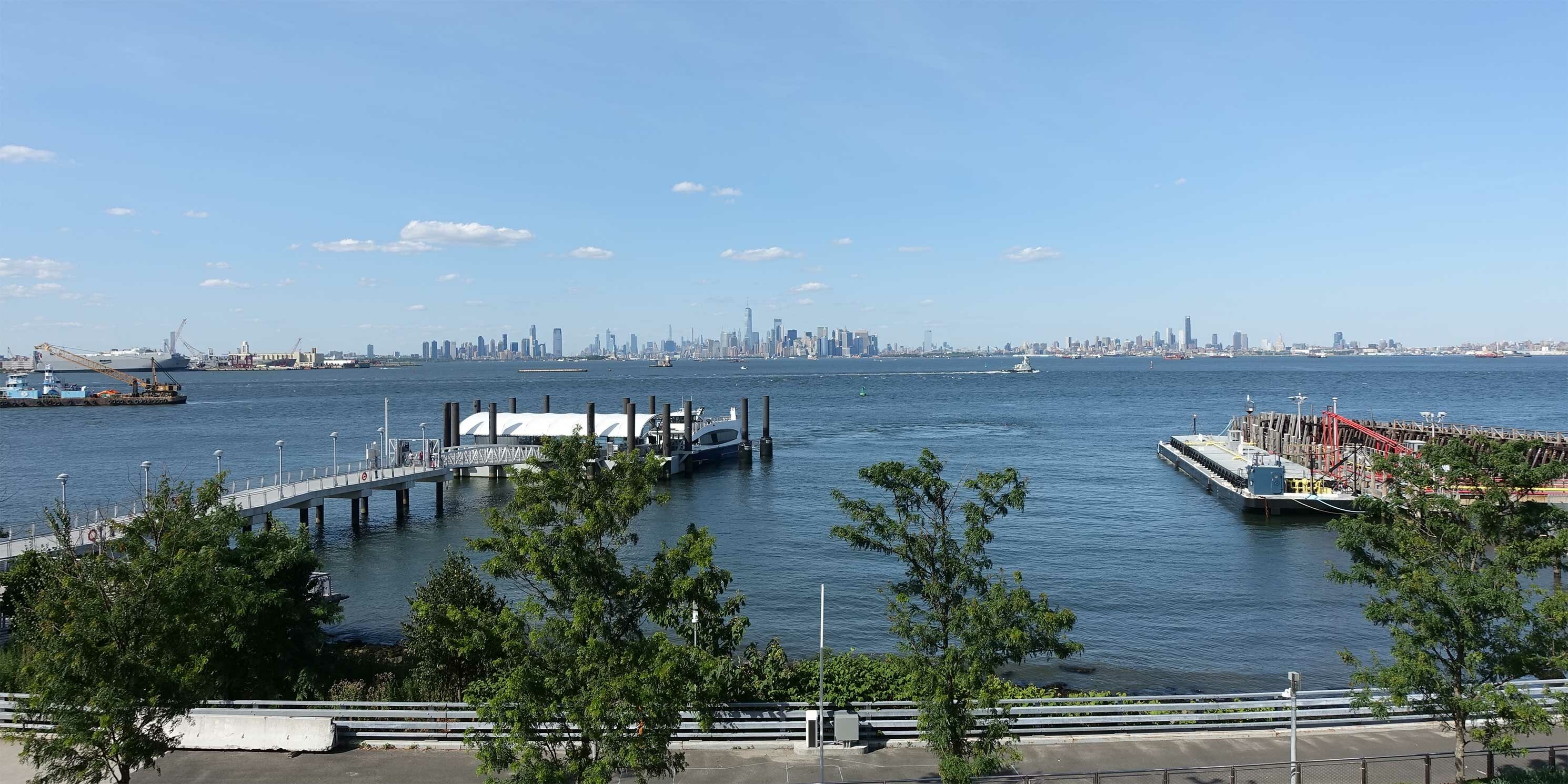
Multi-Hazard & Coordinated Approach
Alternative 3B’s primary intent is to protect the region from future storm surge. While this function is critical, the plan is not expected to protect against the 2.5 feet of sea level rise that New York City could face by the 2050s according to the New York City Panel on Climate Change’s high-end projections, and up to six feet of sea level rise by the end of the century.
Rather than a piecemeal approach, the region needs a holistic water management solution that addresses increased precipitation, groundwater flooding, sewer systems, and sea level rise in addition to storm surge. As outlined below, MAS believes that flexible, adaptive, and phased capital infrastructure projects are a more rational, resilient, and cost-effective alternative to such a massive, decades-long structural approach.
To be a multi-hazard solution, moreover, there must be clear alignment with existing resiliency plans, some of which are already underway. These include, for example, AdaptNYC, Lower Manhattan Coastal Resiliency, East Side Coastal Resiliency, DCP’s Comprehensive Waterfront Plan, NYC Parks’ Wetlands Management Framework, NYCHA’s Climate Change Plan, and DEP’s Long-Term Control Plan. Unfortunately, how the study aligns with Federal, State, and City planning efforts is still unclear.
Natural and Nature-Based Solutions
The Draft Integrated Feasibility Report and Tier I Environmental Impact Statement documents acknowledge that Alternative 3B may have significant impacts on fish species, migratory patterns, and habitat. This is because large-scale, in-water barriers narrow channel widths and restrict tidal flow, marine species migration, sediment transport, and worsen water quality.
While the shortage of available waterfront land in New York City necessitates the implementation of hard infrastructure in many locations, there is significant opportunity for a more nuanced, ecologically sensitive plan. MAS finds that Alternative 3B’s massive structures are inconsistent with the USACE’s own call for non-structural methods such as wetland creation and restoration, coastal and maritime forest restoration, oyster reef habitat creation, and other methods outlined in the Hudson-Raritan Estuary Comprehensive Restoration Plan.
As other cities and countries around the world are learning, we must engineer with, not against, nature. New York City deserves a more comprehensive and sophisticated solution that achieves infrastructural protection and coastal and ecosystem restoration at the same time. Independent scientists, engineers, and others have identified a range of layered in-water and on-land measures in the region that are already accomplishing both. These include, for example, expanded wetlands and dunes, daylighted streams, berms, and living breakwaters and ecologically enhanced bulkheads and revetments. It is worth noting that such nature-based solutions have other benefits as well, including recreational opportunities and reducing urban heat and air pollution.
Urban Design
The USACE’s preliminary renderings indicate that shoreline barriers would have a massive impact on New Yorkers’ visual and physical experience of the waterfront in areas like Hudson River Park, East Harlem, and Greenpoint. In many cases, seawalls would impede visual and physical access to the waterfront altogether.
Rather than constructing massive walls that would jut up from the shoreline, the plan must more seamlessly integrate hard infrastructure into public realm topology and better preserve unobstructed access to parks, beaches, and other waterfront areas. Doing so will require collaboration with architects, landscape architects, ecologists, and other professionals at the forefront of this work, as well as directly affected communities. Moreover, for the public to better understand and engage in a productive dialogue about urban design at the water’s edge, the USACE will need to produce renderings from additional vantage points (both from land and from the water) at all affected open spaces around the city.
Environmental Justice
According to the USACE, nearly every feature of the Tentatively Selected Plan touches a Disadvantaged Community (DAC), an area defined as where 24 percent of the population is below the federal poverty level and 51 percent identify as minority. According to the USACE, DACs make up more than half of the study area. As the USACE well knows, it is critical to prioritize these areas given their historical lack of investment.
While many DACs are indeed prioritized under the plan, environmental justice advocates have pointed out that several unprotected DACs will likely suffer induced flooding impacts from other areas. For example, just about every Bronx community along the East River and Long Island Sound (including Hunts Point, Soundview, Castle Hill, and Throgs Neck) will receive little to no flood protection measures and will face significant residual risk caused by the installation of hard infrastructure in other areas. The USACE must prioritize flood protection investments in these and other unprotected vulnerable areas throughout the city.
Public Engagement
MAS appreciates the USACE’s numerous public hearings on the plan and its willingness to engage with stakeholders at additional meetings. That said, it has been difficult for stakeholders and members of the public to understand the details of the plan, given the highly technical terminologies and lack of illustrative diagrams, especially hyperlocal issues. The challenge has been compounded by the short, six-month window for public comment.
Given the sheer cost, lifespan, and geographical impact of the project, NYNJHATS cannot be rushed. The USACE should take its time to carefully and comprehensively document and share public feedback received thus far and be willing to revise the plan in partnership with stakeholders. As an immediate next step, MAS recommends the establishment of local stakeholder task forces and an in-depth peer review process to inform the remainder of the Tier 1 Environmental Impact Statement process and the full duration of the Tier 2 Environmental Impact Statement.
Again, MAS appreciates the significant work thus far on this vitally important project. We look forward to your responses and our continued engagement with you on a plan that maximizes community needs and aspirations, addresses multiple climate hazards, innovatively works with nature, and is flexible and adaptable long into the future.
Sincerely,

Elizabeth Goldstein
President, Municipal Art Society of New York
